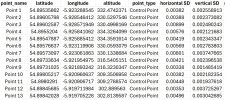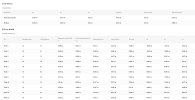Hi,
I’m new to photogrammetry, struggling to get my head around a few things and would like some advice please.
I have a Matrice 4E, a D-RTK 3 base station and access to ntrip corrections.
What would be the most suitable way to incorporate all of the above to provide the most accurate surveys? Struggling to get my head around RTK/PPK processing as all of my surveys are out by around a metre at least. I record GCPs using the D-RTK 3 as a rover (using ntrip corrections), I then use the D-RTK 3 as a base station, connect my drone and fly the mission. Maybe it’s something I’m doing wrong at the processing part. Confused.com!!
Thanks for any help provided.
I’m new to photogrammetry, struggling to get my head around a few things and would like some advice please.
I have a Matrice 4E, a D-RTK 3 base station and access to ntrip corrections.
What would be the most suitable way to incorporate all of the above to provide the most accurate surveys? Struggling to get my head around RTK/PPK processing as all of my surveys are out by around a metre at least. I record GCPs using the D-RTK 3 as a rover (using ntrip corrections), I then use the D-RTK 3 as a base station, connect my drone and fly the mission. Maybe it’s something I’m doing wrong at the processing part. Confused.com!!
Thanks for any help provided.




